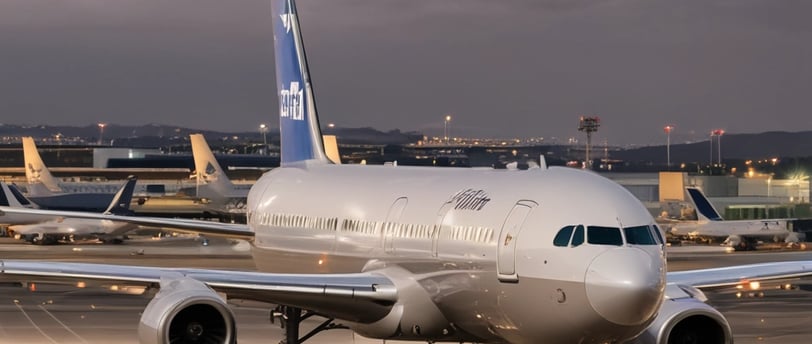Understanding the Differences Between the Boeing 767-200, -300, and -400 Series
BOEING 767
Brandon Johnson
7/15/20251 min read


Aviation Instruction Expertise
The Boeing 767 has been a cornerstone of commercial aviation since its introduction in the early 1980s. Designed as a wide-body, twin-engine aircraft for medium to long-haul routes, the 767 family evolved over the years to meet changing airline needs. Three main passenger variants have been developed: the 767-200, 767-300, and 767-400ER. While they share the same DNA, each variant offers unique capabilities in size, range, and performance.
1. Boeing 767-200: The Original Workhorse
Entry into Service: 1982
Typical Seating: ~181 passengers (2-class configuration)
Range: ~3,850 nautical miles
The 767-200 was the first variant to roll off the production line. Designed to fill the gap between narrow-body jets like the 727 and 757 and larger wide-body aircraft, it offered airlines a fuel-efficient option for transcontinental and early transatlantic routes.
Key Features:
Shortest fuselage in the 767 family
Ideal for routes with moderate demand
Popular with early adopters like United and Delta
Available in both passenger and freighter versions
2. Boeing 767-300: The Stretched Success
Entry into Service: 1986
Typical Seating: ~218 passengers (2-class configuration)
Range: ~5,990 nautical miles (ER version)
The 767-300 introduced a fuselage stretch of nearly 21 feet over the -200, allowing airlines to carry more passengers without significant increases in operating costs. It quickly became the most popular variant.
Key Features:
Extended fuselage for greater capacity
Available as 767-300ER (Extended Range), the most widely used version
Excellent range for long-haul routes like transatlantic and intra-Asia
Commonly used by cargo carriers in its freighter version
3. Boeing 767-400ER: The Final Evolution
Entry into Service: 2000
Typical Seating: ~243 passengers (2-class configuration)
Range: ~5,625 nautical miles
The 767-400ER was a significant redesign rather than a simple stretch. It featured a 21-foot longer fuselage than the -300, raked wingtips for improved aerodynamics, and a 777-style glass cockpit.
Key Features:
Largest and most modern 767 variant
Only used by Delta Air Lines and United Airlines
Enhanced cabin with upgraded interiors and lighting
Less popular commercially but praised for passenger comfort and fuel efficiency
